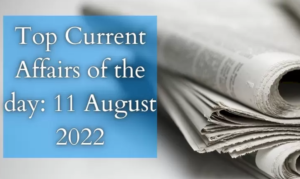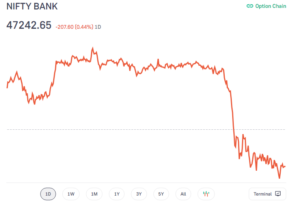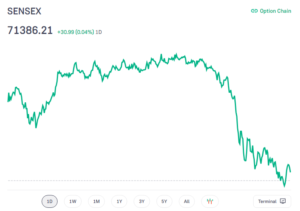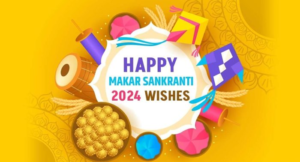
India’s Krishna Srinivasan to head IMF’s Asia-Pacific dept
International Monetary Fund, Managing Director Kristalina Georgieva has announced the appointment of Indian national Krishna Srinivasan as director of the Asia and Pacific Department (APD) from June 22. Srinivasan will succeed Changyong Rhee whose retirement from the Fund was announced on March 23.
Why Srinivasan has appointed as director?
Mr. Srinivasan has more than 27 years of Fund experience, starting in 1994 in the Economist Program. He is currently a Deputy Director in APD where he oversees the department’s surveillance work on a number of large and systemically important countries such as China and Korea, and smaller states in the Pacific such as Fiji and Vanuatu.
Career of Srinivasan:
- Mr. Srinivasan holds a PhD (Honors) in Economics from Indiana University, a Master’s in Economics from the Delhi School of Economics, and a Bachelor’s (Honors) in Economics from the University of Delhi.
- Prior to joining the Fund, Mr. Srinivasan was an Assistant Professor of Economics and International Finance at Indiana-Purdue University and a consultant at the World Bank in DC and the Center for Policy Research and Planning Commission in New Delhi.
- His wide research on Asia, Latin America, and the Caribbean, and on climate and other economic and development issues has appeared in books, academic journals, and media publications.
Important takeaways for all competitive exams:
- IMF Formation: 27 December 1945;
- IMF Headquarters: Washington, D.C., United States;
- IMF Member Countries: 190;
- IMF MD: Kristalina Georgieva.
AR Rahman appointed ambassador of Indo-UK culture platform
Music Maestro, AR Rahman has been appointed as ambassador of The Season of Culture, which marks the 75th anniversary of India’s independence. It was officially launched, by Britain’s Deputy High Commissioner to India Jan Thomson and Director (India) of the British Council Barbara Wickham. The Season of Culture aims to strengthen India-UK collaboration in the areas of arts, English and education.
About season of Culture:
Over 1,400 artists will showcase their collaborations to millions of audiences across India, Britain, Scotland, Wales, and Northern Ireland, through a wide array of arts such as theatre, dance, visual arts, literature, music, architecture, design, fashion, tech-art and new media art. The ‘Season of Culture’ intends to build on the British Council’s work in India and strengthen partnerships between India and the UK in the arts, English, and education. People in both nations will get the opportunity to see unique and exciting creative work by UK and Indian artists.
Important takeaways for all competitive exams:
- British Council Director: Barbara Wickham;
- British Council Headquarters: New Delhi, Delhi.
Assam celebrates Baikho festival for good harvest and rain
The Baikho festival is celebrated in the state of Assam, which is called as gateway to northeast India. It is celebrated by Rabha tribes of India. The Baikho festival is celebrated annually. It is celebrated to bring in auspicious harvest season and to fill it with abundant crops and good health. This is a celebration of good harvest. It is an ancient tradition. It is predominantly observed by Rabha Tribe. However, people from other communities also harmonise in the celebrations.
How this festival celebrated?
- During this festival, various rituals are carried out for warding off evil spirits, for bringing good will to community and sparking ample rains. In the afternoon, people dress in traditional attire and dance to the drum beats.
- In the evening, they set alight a tall structure made from bundles of bamboo. After the sun sets, priests offer prayers to the God of harvest. After the prayers priests run over hot coals, which are left simmering by the fire.
- This act is meant to honour the harvest deity. Later, women wash the feet of priests and serve them food. In another unique customs, Rabha Tribes smear their faces with rice flour and pour rice beer for others.
About Rabhas Tribes:
Rabhas are a Tibeto-Burman community. They reside in Lower Assam in Garo hills and Dooar region of West Bengal. They are among the plains tribe in state. They are an agriculture-based community. They have distinctive culture and celebrations.
Important takeaways for all competitive exams:
- Assam Capital: Dispur;
- Assam Chief Minister: Himanta Biswa Sarma;
- Assam Governor: Jagadish Mukhi.
Health Minister Mansukh Mandaviya launched new Logo for ‘Ayurveda Aahar’
The ‘Ayurveda Aahar’ logo was launched by Health Minister Mansukh Mandaviya, on the occasion of World Food Safety Day. The Ayurveda Aahar Logo will allow for easy identification. Thus, it will help in creating a unique Identity of ‘Ayurveda Aahar’. The logo will also reinforce the quality of Ayurvedic products. As per the Food Safety and Standards Authority of India (FSSAI), Ayurveda Aahar is food prepared in line with the recipes or ingredients or processes given in the authoritative books of Ayurveda.
About the Ayurveda Aahar Logo:
As per FSSAI, the design of Ayurveda Aahar logo is such that it contains initial letters of words Ayurveda and Aahar in English and Devanagari. In this logo, Hindi letter Aa, and English letter ‘A’ have been merged in a way that they appear to be single form. It contains symbolic 5 leaves, that represents five elements namely; ether, water, air, fire, and Earth. Green colour stands for natural, biotic, wholesome, organic and herbal.
‘Gaganyaan’ India’s first human space mission scheduled to launch in 2023
Gaganyaan
India will attain the unique distinction of launching the first Human Space Mission ‘Gaganyaan’ as well as the first Human Ocean Mission in 2023, according to Space and Earth Sciences Minister Dr Jitendra Singh. Testing for both the Space and Ocean manned missions have evolved to an advanced stage, and that the remarkable accomplishment would be performed in the second half of 2023, while speaking at the World Oceans Day festivities in New Delhi.
Key Points:
- According to the Minister, the government will shortly reveal the Blue Economic Policy, and ocean-based sectors would employ roughly 40 million people by 2030.
- Major missions for Gaganyaan are planned for the second half of 2022, including a test vehicle flight to validate the crew escape system’s performance and the first uncrewed Gaganyaan mission, which will be followed by a second uncrewed mission in late 2022 carrying “Vyommitra,” an Isro-developed spacefaring human robot, and finally the first crewed Gaganyaan mission in 2023.
- The natural riches buried beneath the sea would propel the country’s growth to unprecedented heights.
- India’s marine enterprises must realize their full potential since oceans supply both live and non-living resources, ranging from fisheries to marine biotechnology, minerals, and renewable energy.
World’s First ‘Right To Repair’ Law For Digital Electronics Passed by New York Legislature
New York state legislature is a world first, to pass the law for Digital Electronics. The “right to repair” bill enacted by the requiring digital electronics makers to make parts, tools, information, and software available to customers and independent repair businesses. After government pressure to safeguard customers’ rights to repair and refurbish their purchased products, the “Fair Repair Act” was enacted.
About the Digital Electronics Law:
- This is tremendous news for independent repair shops, since they will now be allowed to compete with manufacturers, opposing the repair market concentration that manufacturers have established by limiting access to parts and tools.
- Without the approval of the ‘Right to Repair,’ 59 percent of independent repair firms claimed they could have to close their doors, according to a recent poll.
- This bill covers most electrical equipment, however there are a few significant exceptions.
- It excludes automobiles (which are currently covered by a nationwide Right to Repair agreement between OEMs and aftermarket), household appliances, medical gadgets, public safety communications equipment such as police radios, agricultural equipment, and off-road equipment.
NASA’s DAVINCI Mission is set to launch in 2029
NASA is set to launch a mission called “DAVINCI Mission”. DAVINCI stands for “Deep Atmosphere Venus Investigation of Noble gases, Chemistry and Imaging Mission”. The mission will fly by Venus and explore its harsh atmosphere in 2029. It will be the first mission to study Venus by means of both flybys and descent. Spacecraft is likely to explore layered Venusian atmosphere. It will reach Venusian surface by June 2031. The mission would capture data about Venus, that scientists are trying to measure since early 1980s.
About the DAVINCI spacecraft:
DAVINCI spacecraft will serve as a flying chemistry lab. It can measure different aspects of atmosphere and climate of Venus. Spacecraft will take the first descent images of its highlands. Instruments on the spacecraft will also be able to map Venusian surface as well as detect composition of mountainlike highlands of Venus’. This lab will paint a picture of layered Venus’s atmosphere as well as the picture of how it interacts with surface in Alpha Regio mountains.
Prasar Bharati CEO Mayank Kumar Agrawal assigned additionally as DD Director
Mayank Kumar Agrawal, director general of Doordarshan and Doordarshan News, has been assigned additional responsibility as Prasar Bharati’s chief executive officer. Agrawal succeeds Shashi Shekhar Vempati, who served as CEO of the state broadcaster for five years. Following permission from Information and Broadcasting Minister Anurag Thakur, the decision was made to grant the extra charge to the 1989-batch Indian Information Service official until further orders or regular appointment to the post.
KEY POINTS:
- Shashi Shekhar Vempati’s five-year tenure as Prasar Bharati CEO came to an end, prompting the change. On the proposal of a three-member commission led by the then Vice-President, Mr. Vempati was selected as CEO of the public broadcaster in June 2017.
- Mr. Vempati, an IIT-Bombay graduate, was the first non-bureaucrat to hold the position since it was established in 1997.
- Working with seven ministers in the ministry of information and broadcasting over the last few years has been a rewarding experience.
- Dr. L Murugan, late Arun Jaitley, M Venkaiah Naidu, Smriti Irani, Rajyavardhan Rathore, Prakash Javadekar, Anurag Thakur Every step of the way, they have all led, mentored, and supported Mayank Kumar Agarwal.
- Vempati congratulated Agrawal, whom he called to as a dear colleague, and thanked Prime Minister Narendra Modi for allowing him to contribute to the nation during his five years as CEO of Prasar Bharati.
- Modi’s decision to hand responsibility (for the state broadcaster) to a rank outsider from the commercial sector, Vempati noted, was a leap of faith.
Important Takeaways For All Competitive Exams:
- Information and Broadcasting Minister: Anurag Thakur
Tamil Nadu’s CM unveils the 44th Chess Olympiad’s logo, mascot
M.K. Stalin, the Chief Minister of Tamil Nadu, unveiled the logo and mascot for the 44th Chess Olympiad, which will take place in Mamallapuram next month. Between July 28 and August 10, approximately 2,000 players from over 180 countries will compete in the international event. Mr. Stalin also unveiled a countdown clock for the Olympiad at the Greater Chennai Corporation’s headquarters, Ripon Buildings.
KEY POINTS:
- Ministers for Health Ma. Subramanian, Hindu Religious and Charitable Endowments P.K. Sekarbabu, Youth Welfare and Sports Development Siva V. Meyyanathan, and Tourism Minister M. Mathiventhan were all in attendance.
- Mayor R. Priya of the Greater Chennai Corporation, Chief Secretary V. Irai Anbu, and All India Chess Federation president Sanjay Kapoor, as well as other officials, were in attendance.
- The Chess Olympiad torch will be carried across the country soon before being lit in the venue on the first day of the competition.
- After the World Championship encounter between India’s Viswanathan Anand and Magnus Carlsen in 2013, this is Chennai’s second big international chess event. The international tournament preparations are moving at a breakneck speed.
Important Takeaways For All Competitive Exams:
- Chief Minister of Tamil Nadu: M.K. Stalin
- All India Chess Federation president: Sanjay Kapoor
Over 1.18 billion payment devices been deployed in India as of April
The Payments Infrastructure Development Fund (PIDF) scheme had deployed more than 4.11 lakh PoS, mobile PoS, and other physical devices across the country as of April 30, 2022, according to the RBI. The scheme also had deployed 1,14,05,116 digital devices, including interoperable QR code-based payments such as UPI QR and Bharat QR.
KEY POINTS:
- The Reserve Bank’s PIDF programme, which will be operative from January 2021, subsidises the implementation of Points of Sale (PoS) infrastructure (physical and digital modes) in tier 3 to tier 6 cities and the country’s northeastern states.
- Beneficiaries of the PM Street Vendor’s AtmaNirbhar Nidhi (PM SVANidhi Scheme) in tier-1 and tier-2 centres were also covered as of August 26, 2021.
- The Reserve Bank, licenced card networks, and card producing banks all contribute to the PIDF, which now has a corpus of Rs 811.4 crore.
- PIDF-registered acquiring institutions (banks and non-banks) pledge region-specific deployment targets, report deployment statistics, and claim subsidies for devices that meet the criteria.
- The PIDF plan is being amended by increasing the subsidy amount and streamlining the subsidy claim process, according to the RBI, in order to boost the deployment of payment acceptance touchpoints.
- This will hasten the rollout of payment acceptance touchpoints across the country, with a particular emphasis on rural areas.
- All qualifying installations that have been operating since the plan’s inception are eligible to file claims under the updated scheme.
Important Takeaways For All Competitive Exams:
- Governor of Reserve Bank of India: Shri Shaktikanta Das
Union Ministers Dharmendra Pradhan released books titled ‘Loktantra ke Swar’ & ‘The Republican Ethic’
Union Education and Skill Development & Entrepreneurship Minister, Dharmendra Pradhan along with Union Minister for Information & Broadcasting and Sports Anurag Thakur released books ‘Loktantra ke Swar’ and ‘The Republican Ethic, having selected speeches of the President of India Ram Nath Kovind. This is the fourth volume of the series featuring the fourth year of the presidency of Ram Nath Kovind. The compilation includes speeches on a wide range of subjects. E-books were also released on the occasion.
About the Loktantra Ke Swar:
This book captures President’s thoughts on varied topics such as public service, ethics, education, aspirations of our youth, contemporary global issues. The book will enrich public discourse and serve as a guiding light towards taking India forward in the Amrit Kaal. The Minister also suggested that educational institutions should engage students in discussions and debates on the relevant topics elucidated by President in his speeches.
For the season 2022-23, Cabinet increases MSP for Kharif crops
Union Minister for Information & Broadcasting and Youth Affairs & Sports, Anurag Thakur said that the Union Cabinet has authorised an increase in the Minimum Support Price (MSP) for several Kharif (summer) crops for the year 2022-23. The MSP for Kharif crops for the crop year 2022-23 will now rise.
KEY POINTS:
- Prime Minister Narendra Modi‘s Cabinet Committee on Economic Affairs (CCEA) has authorised a hike in MSP for all mandatory Kharif crops for the crop year 2022-23.
- The MSP of 14 kharif crops was decided in cabinet meeting, as told by Anurag Thakur.
- For the 2022-23 crop year, the MSP for common grade paddy has been increased to 2,040 per quintal, up from 1,940 the previous year.
- The support price for ‘A’ quality paddy has been increased from 1,960 to 2,060 per quintal.
- The main kharif crop is paddy, which has already begun to be sown. The meteorological authority predicts that the Southwest monsoon in 2022 will be normal, with a long-term average of 99 percent.
- In the last three years, normal to good monsoons have benefited kharif food grain production, which has increased by 2.8 percent on average, and this may result in kharif production increasing by 2.5 percent, on top of a 1.5 percent increase in rabi output.
- Several programmes undertaken by the Narendra Modi-led BJP administration over the previous eight years to enhance farmers’ income and promote holistic growth of the farm sector were also emphasised by the Information and Broadcasting Minister.
What is MSP?
In some parts of India, the minimum support price (MSP) is an advisory price signal that is part of a larger set of agricultural policies. The government recommends this informal support price in order to guarantee the farmer a minimal profit for the harvest while also enhancing food security in the country. In the 1960s, MSP was used as an incentive for farmers to adopt technology with the goal of enhancing agricultural land productivity; but, in the 2000s, it was viewed as a market intervention and farmer income plan. The effectiveness of a price regime like this has varied greatly between states and commodities. The percentage of farmers that are aware of the MSP is only 23%.
Important Takeaways For All Competitive Exams:
- Union Minister for Information & Broadcasting and Youth Affairs & Sports: Anurag Thakur
- Chairman of Cabinet Committee on Economic Affairs (CCEA): Prime Minister Narendra Modi
Fitch slants India’s growth forecast to 7.8%, revises outlook as ‘Stable’
Fitch Ratings upgraded India‘s outlook from Negative to Stable, noting diminishing downside risks to medium-term growth as a result of the country’s strong economic recovery and the easing of financial sector problems. However, due to the impact of inflation on development momentum, the global rating firm has decreased its GDP growth prediction for 2022-23 from 8.5 percent expected in March to 7.8 percent.
KEY POINTS:
- Despite near-term headwinds from the global commodity price shock, Fitch expects India’s economy to grow at a faster pace than similarly rated peers, but the country’s public finances remain a credit weakness, with the debt ratio broadly stabilising, based on its expectations of persistent large deficits.
- While adjusting the outlook, the firm maintained India’s long-term foreign currency issuer default rating of ‘BBB-,’ adding that this ‘balances India’s external resilience from substantial foreign-exchange reserve buffers against certain lagging structural indicators.’
- A BBB rating indicates low default risk and adequate financial commitment payment capability, while poor business or economic conditions are more likely to erode this capacity.
- While India’s debt-to-GDP ratio has been reduced in the short term due to high nominal GDP growth, Fitch Ratings estimates that greater subsidies and fuel excise tax cuts will cost around 0.8 percent of GDP this year to counteract the rise in consumer prices. This will increase the Centre’s budget deficit to 6.8% of GDP, up from the 6.4 percent objective set in the Budget for 2022-23.
- In the medium term, Fitch Ratings expects India to grow at a rate of around 7% between 2023-24 and 2026-27, supported by the government’s infrastructure push, reform agenda, and easing financial sector pressures. It emphasises that this strong growth outlook is a key driver for its decision, as it will sustain a gradual uptick in credit metrics.
While the Reserve Bank of India (RBI) now anticipates inflation to average 6.7 percent through 2022-23, Fitch predicts it to be higher, at 6.9 percent, compared to the median rate of 4.9 percent for BBB-rated countries, owing to strong increases in global commodity prices and underlying demand pressures.
About Fitch Ratings:
Fitch Ratings Inc. is a credit rating firm based in the United States. It is one of the “Big Three” credit rating organisations, along with Moody’s and Standard & Poor’s. The US Securities and Exchange Commission certified it as one of three nationally recognised statistical rating organisations (NRSRO) in 1975. Fitch Ratings has offices in both New York and London. Following the acquisition of an additional 20% for $2.8 billion on April 12, 2018, Hearst now owns 100% of the company. After expanding its ownership position by 30% on December 12, 2014, in a transaction valued at $1.965 billion, Hearst held 80 percent of the company. Following expansions on an initial acquisition in 2006, Hearst’s previous stock position was 50%.
All details about Ayushman Bharat-National Health Protection Scheme
What is the National Health Protection Scheme?
The National Health Protection scheme is the Ayushman Bharat scheme in India. Under this scheme, the government ensures that it will cover over 10 crores of poor and vulnerable families by providing up to ₹5 lakh for each family per year, with secondary and tertiary hospitalization. The Ayushman Bharat-National Health Protection scheme will include the already implemented schemes sponsored by the Centra government, Rashtriya Swasthya Bima Yojana (RSBY), and the Senior Citizen Health Insurance Scheme (SCHIS). This scheme has an easy and simple registration process and the beneficiaries can easily avail of cashless benefits from any private/government hospital in the nation.
The expenditure will be shared between Central and state governments in a specified ratio which is decided by the ministry of finance. The total expenditure will depend on the states or UTs where the Ayushman Bharat-National health protection scheme is implemented and it also depends on what is the actual market-determined premium paid in those states and UTs. Ayushman Bharat-National health protection scheme aims to provide healthcare facilities to 10.74 crore people living in poverty and people in rural areas with low healthcare facilities.
Features of the Ayushman Bharat scheme
- Ayushman Bharat-National health protection scheme aims to cover ₹5 lakh per family per year.
- All the benefits of Ayushman Bharat are portable throughout the country and beneficiaries registered under the scheme can avail of cashless benefits from any private/Government hospital across the nation.
- The scheme will be an entitlement-based scheme in which entitlement is decided based on deprivation criteria in the SECC database.
- The beneficiaries registered under the scheme can avail their rightful benefits from any private or government hospital.
- To co-operate federalism and increase flexibility to states, is the core principle of the Ayushman Bharat-National Health Protection scheme.
- Ayushman Bharat National Health Protection Mission Council (AB-NHPMC) is set up at the apex level to give policy directions and foster coordination between center and state, which is chaired by the Union Health and Family Welfare Minister.
- To implement this scheme in states, the states need to have State Health Agency (SHA).
- For the funding to reach SHA from the center through the Ayushman Bharat-National Health Protection scheme, the escrow account can be used directly.
- For paperless and cashless transactions, a scalable and modular IT platform will be established in partnership with NITI Aayog.
Impacts of Ayushman Bharat
- Nearly 40% of the population which comes under the poor and vulnerable part of the society is benefited from the implementation of the national health protection scheme.
- Covers almost all secondary and tertiary hospitalization.
- Covers up to ₹5 lakh to provide medical facilities to each family per year.
- Leads to increase quality health and medication.
- Meets the need of the backward part of the society, which is untouched by proper healthcare facilities due to lack of finance.
- Lead to timely treatment and improvement of people which will give positive outcomes in terms of health.
- Improvement in Productivity and efficiency will lead to creating job opportunities, letting people live a better and improved life.
FAQs related to the health protection scheme
1. What is the national health protection scheme?
Ans. The national health protection scheme is funded by Government for the public to ensure medical and health facilities.
2. What is the Ayushman Bharat health protection scheme?
Ans. The health protection scheme is also known as the Ayushman Bharat health protection scheme. It aims to provide healthcare facilities and to cover up to 5 lakhs per family per year for hospitalization.
3. What are the benefits of a health insurance scheme?
Ans. This health protection scheme provides full coverage of medical facilities and gives cash benefits to those registered under the scheme.
European Parliament votes to ban sale of new petrol and diesel cars by 2035
Members of the European Parliament have voted to ban the sale of new petrol and diesel cars by 2035. The move aims to step up the fight against climate change through the faster development of electric vehicles. The voting was held on an amendment that would have allowed some auto emissions from new vehicles after 2035, which was rejected by Members of Parliament.
Why this happen?
- Europe’s shift to electric vehicles and embolden carmakers to invest heavily in electrification, aided by another EU law that will require countries to install millions of vehicle chargers.
- The European Union assembly voted in Strasbourg, France to require automakers to cut carbon-dioxide emissions by 100 percent by the middle of the next decade.
- The mandate would amount to a prohibition on the sale in the 27-nation EU of new cars powered by gasoline or diesel.
- The vote upholds a key pillar of the European Union’s plans to cut net planet-warming emissions 55% by 2030, from 1990 levels – a target that requires faster emissions reductions from industry, energy and transport.
Key points:
- Lawmakers suported a proposal, made by the European Commission last year, to require a 100% reduction in CO2 emissions from new cars by 2035, which would make it impossible to sell fossil fuel-powered vehicles in the EU from that date.
- Attempts by some lawmakers to weaken the target to a 90% CO2 cut by 2035 were rejected.
Important takeaways for all competitive exams:
- European Parliament Headquarters: Strasbourg, France;
- European Parliament Founded: 19 March 1958.
Himachal Pradesh becomes the first Indian state to approve a policy for drones
The Himachal Pradesh government gave nod to a drone policy as it seeks to enable the use of drones and similar technology for different public services in the hill state. The ‘Himachal Pradesh Drone Policy 2022’ was approved by the chief minister Jai Ram Thakur. The policy envisions creating a holistic drone ecosystem built upon the foundation of Governance and Reforms Using Drones (GARUD). With this new drone policy, Himachal Pradesh has become the first state in the country to formally acknowledge the public use of drones.
About the “Himachal Pradesh Drone Policy 2022”:
- Himachal’s drone policy mainly focuses on creating drone-enabled technology, creation of manpower through the establishment of training schools, startup and innovation schemes, and more.
- The policy aims to propagate the use of drone-enabled technology in different sectors such as defence, transport, health, agriculture and more.
- Delivery of medicines, medical equipment, and other essential supplies will also commence with the help of drones in pandemic-affected and remote areas.
Important takeaways for all competitive exams:
- Himachal Pradesh Capital: Shimla (Summer), Dharamshala (Winter);
- Himachal Pradesh Governor: Rajendra Arlekar;
- Himachal Pradesh Chief Minister: Jai Ram Thakur.
Har Ghar Dastak 2.0: Objectives and Role of Government
Har Ghar Dastak 2.0
Har Ghar Dastak 2.0 is relaunched by the government of India to facilitate the vaccination process in all the states of India and the union territories from 1st June to 31st July 2022. The states and union territories are advised to take the campaign seriously this time to make people aware and make India fully vaccinated. The campaign’s main aim is to immunize people by taking the vaccine and enjoying the benefits.
Har Ghar Dastak 2.0 campaign: About
Har Ghar Dastak was launched during the second wave of Covid-19. It was not easy to achieve great results with the campaign because there were crores of people affected by Covid-19 already. The government of India took the initiative and implemented the Har Ghar Dastak campaign all over India. The healthcare workers were provided with vaccine shots and sent door to door to make people immunized. The main aim of this drive was to vaccinate people living in remote areas and districts with low healthcare facilities.
Har Ghar Dastak 2.0 campaign: Objectives
The campaign has a few objectives which are listed below-
- To vaccinate the eligible groups first. (The people who are ready for their second dose)
- To arrange Door to door campaign and take proper precautions.
- People aged between 60-70 years wee the major focus.
- Campaign focused on schools, colleges, homes, brick kilns, etc.
Har Ghar Dastak 2.0 campaign: Governments role
The government ensured that the states and union territories have undertaken effective measures and monitoring with micro-plans based on lists of eligible citizens. The government ensured that the state and union territories review the administration of precaution doses for the age groups of 18-59 in private hospitals.
A total of 193.57 crores doses have been administered across the country. 96.3 percent of people above 15 years have received at least one dose and 86.3 percent have received both of the Covid-19 vaccine doses says the health minister. With the implementation of the Har Ghar Dastak 2.0 campaign government wants to ensure that the people living in remote areas will have low healthcare facilities get the precautions doses.
Union Health Minister in a video conference advised the states and union territories to plan a two-month-long schedule for Har Ghar Dastak 2.0 campaign, which should focus on door-to-door campaigns. The first Har Ghar Dastak campaign was continued till 31st December, which focused on 100% vaccination of the first dose of Covid-19. It was started on 16th January 2021.
BIMSTEC celebrates its 25th anniversary
The Secretariat of the Bay of Bengal Initiative for Multi-Sectoral Technical and Economic Cooperation (BIMSTEC) in Dhaka celebrated the 25th Anniversary of the regional organisation on BIMSTEC Day. The evolution of BIMSTEC over the last 25 years from the signing of the Bangkok Declaration on June 6 in 1996, and highlighted milestones such as the establishment of the Secretariat in Dhaka in 2014 and the signature of the BIMSTEC Charter during the Fifth Summit in Colombo on March 30, 2022.
About the BIMSTEC:
- It is an international organization of South Asia and Southeast Asian countries.
- Bangladesh, Bhutan, India, Myanmar, Nepal, Sri Lanka, and Thailand are members of BIMSTEC.
- It was formed on 6 June 1997 and its headquarters is located in Dhaka, Bangladesh.
WHO award for PGI Chandigarh centre for tobacco control
The World Health Organisation has awarded the Resource Centre for Tobacco Control (e-RCTC) of the Department of Community Medicine and School of Public Health at the Postgraduate Institute of Medical Education and Research (PGIMER) in Chandigarh with the Regional Director Special Recognition Award. The Resource Centre for Tobacco Control provides information related to tobacco control in India, including circulars and orders, policies and legislations, multidisciplinary publications.
Key points:
- Besides being a resource hub, the centre has achieved heights in capacity building by organising more than 50 workshops and webinars for around 3,500 program managers and academicians.
- The Resource Center for Tobacco Control, a joint initiative of the PGIMER and the UNION-SEA, was set up in 2018 by 25 organisations working over tobacco control in India with an aim to showcase tobacco control initiatives.
- The portal has attracted 4.2 lakh visitors from 100 countries in three years, said Rajeev Kumar, Project Coordinator, e-RCTC.
Aam Aadmi Bima Yojana: Criteria, Feature, and Benefits
What is Aam Aadmi Bima Yojana?
The government of India has launched various schemes now and one of them is the Aam Aadmi Bima Yojana for the benefit of the people. Aam Aadmi Bima Yojana aims to provide financial support for the people in need. It was launched on 2nd October 2007. The scheme aims to cover the expenses of families who belong to below poverty line backgrounds. The citizens who are not working on regular payroll like cobblers, shopkeepers, drivers, fishermen, etc can be benefited from this scheme. The Aam Aadmi Bima Yojana (AABY) supports these people when they need, it or when there is a major event that changes their life like disability or death. AABY provides financial support to those families who are hit by unfortunate events of life.
Aam Aadmi Bima Yojana: Criteria
Citizens of India are eligible for Aam Aadmi Bima Yojana but not all the citizens. There is a specific category under which the citizens can enroll themselves to enjoy the benefits of the Aam Aadmi Bima Yojana. The specific category is given by the government of India which is listed below.
- Age- The age limit for applying for Aam Aadmi Bima Yojana starts from 18 years to 59 years. Any person who comes under this age category is eligible to apply for AABY.
- Income- The applicant applying for the Aam Aadmi Bima Yojana must belong to the Below Poverty Line background. The person who belongs to a rural landless household is also eligible to apply for AABY.
- Members- Only one member of the family applying for AABY is eligible to get coverage and he/she must be the sole earner of the family.
If the citizens are eligible for all these categories, then they can apply for Aam Aadmi Bima Yojana and the people who are not under these categories can apply for other Governmental schemes.
Aam Aadmi Bima Yojana: Features
- Affordable- The premium cost of Aam Aadmi Bima Yojana is very low and this makes it more affordable for the people with low income. The applicants do not have to worry about paying the whole premium as the government is holding them back and paying half of the premium.
- Advantages of Technology- As technology is transforming in this developing era, the government is trying to encourage people to try new things which are related to trending technologies. In Aam Aadmi Bima Yojana, all the details and data are digitalized and tracked using web-based systems. This enables the quick transfer of information whenever it is needed. During the claim settlement, it makes the work easier for the beneficiaries.
- Assistance- All the members who registered in Aam Aadmi Bima Yojana can get their queries solved easily by contacting the nearest life insurance corporation branch. They are also available via call, email, and personal visits.
Aam Aadmi Bima Yojana: Benefits
All the government schemes have major benefits for the people living under low-income categories. This scheme also comes with various advantages which are listed below.
- Aam Aadmi Bima Yojana covers death claims of the applicant who registered under the Aam Aadmi Bima Yojana and is under the age of 18 to 59, then LIC pays a death claim of ₹30,000. The cause of death must be a natural death.
- If the sole earner of the family is disabled due to any reason and is registered under the Aam Aadmi Bima Yojana, the scheme will provide financial support to the family. If the person is partially disabled, then the family will be given 37,500 and if the person is permanently disabled then the family will be given ₹75,000.
- The scheme also covers claims for accidental benefits. If the person dies due to an accident, the AABY will cover up to ₹75,000.
- The scheme provides scholarship benefits. The scheme ensures that at least two children of a family received interrupted education. For eligible students, the scheme provides a free scholarship of ₹100 per month from grades 9 to 12 on a half-yearly basis.
Aam Aadmi Bima Yojana: Documents Required
- Application form
- Identity proof
- Income certificate
- Address proof
- Nominee Application form
FAQs related to Aam Aadmi Bima Yojana
1. What is the Aam Aadmi Bima Yojana?
Ans. Aam Aadmi Bima Yojana is the merger of social security schemes, Aam Aadmi Bima Yojana and Janashree Bima Yojana, which is approved by the government of India, under the Ministry of Finance.
2. What are the eligibility criteria for Aam Aadmi Bima Yojana?
Ans. The age limit for the Aam Aadmi Bima Yojana is under 18-59 years. The applicant must belong to a Below poverty line background.
3. How to register a death insurance claim under Aam Aadmi Yojana?
Ans. The person who wants to claim death insurance under the Aam Aadmi Bima Yojana must have the required documents along with a death registration certificate.








